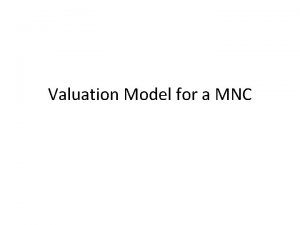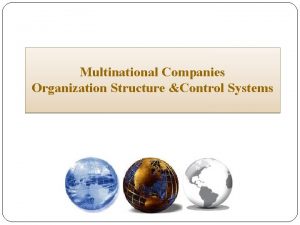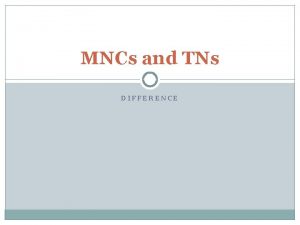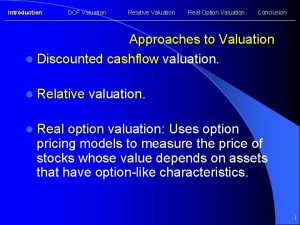Valuation Model for a MNC Valuation Model for






- Slides: 6

Valuation Model for a MNC

Valuation Model for a MNC • where E(CF$, t) represents expected cash flows to be received at the end of period t, • n represents the number of periods into the future in which cash flows are received, and • k represents the required rate of return by investors. 2

Measuring MNC International Cash Flows • where CFj, t represents the amount of cash flow denominated in a particular foreign currency j at the end of period t, • Sj, t represents the exchange rate at which the foreign currency (measured in dollars per unit of the foreign currency) can be converted to dollars at the end of period t. 3

Changes in the Value of a MNC • Changes in foreign market conditions = impact on foreign currency earnings and thus on foreign currency cash flows. • Changes in political risk (policy of foreign government towards MNC) = impact on foreign currency earnings and thus on foreign currency cash flows. • Changes in the MNC’s cost of capital (required return) • Changes in the exchange rate: – Stronger foreign currency will increase U. S. dollar equivalent of cash flows. – Weaker foreign currency will decrease U. S. dollar equivalent of cash flows.

But Why do Domestic Firms Pursue International Business Activities 1. Theory of Comparative Advantage 2. Imperfect Markets Theory 3. Product Cycle Theory 5

Forms of International Business 1. International Trade (Exporting and Importing) 2. Licensing 3. Franchising 4. Joint Ventures 5. Acquisition of Existing Operations 6. Establishing New Foreign Subsidiaries 6









